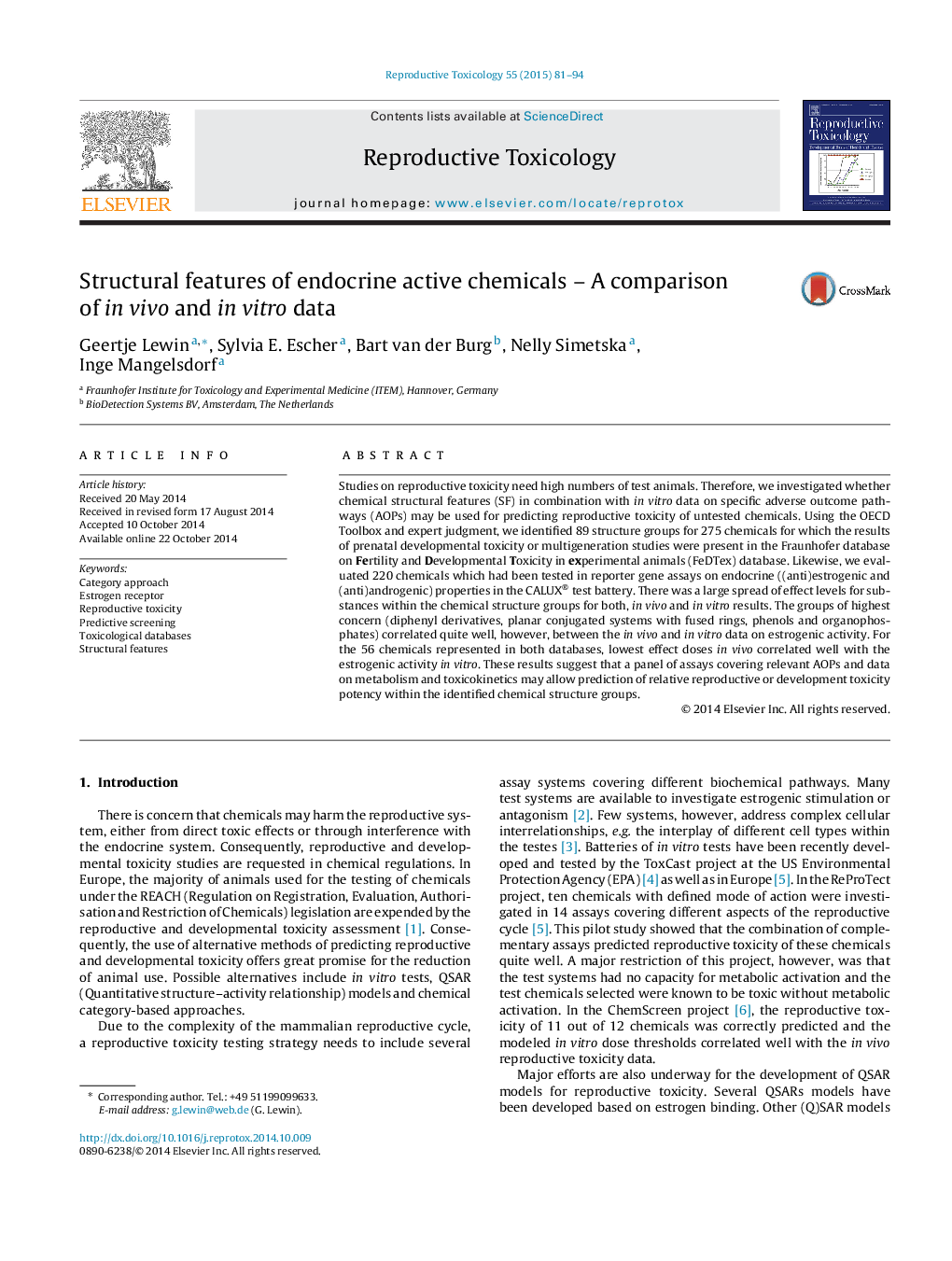| کد مقاله | کد نشریه | سال انتشار | مقاله انگلیسی | نسخه تمام متن |
|---|---|---|---|---|
| 2593455 | 1562164 | 2015 | 14 صفحه PDF | دانلود رایگان |

• 89 chemical structural features assessed for endocrine properties in vivo and in vitro.
• High correlation for endocrine effects in vivo with estrogenic properties in vitro.
• Lack of published negative study data is obvious.
Studies on reproductive toxicity need high numbers of test animals. Therefore, we investigated whether chemical structural features (SF) in combination with in vitro data on specific adverse outcome pathways (AOPs) may be used for predicting reproductive toxicity of untested chemicals. Using the OECD Toolbox and expert judgment, we identified 89 structure groups for 275 chemicals for which the results of prenatal developmental toxicity or multigeneration studies were present in the Fraunhofer database on Fertility and Developmental Toxicity in experimental animals (FeDTex) database. Likewise, we evaluated 220 chemicals which had been tested in reporter gene assays on endocrine ((anti)estrogenic and (anti)androgenic) properties in the CALUX® test battery. There was a large spread of effect levels for substances within the chemical structure groups for both, in vivo and in vitro results. The groups of highest concern (diphenyl derivatives, planar conjugated systems with fused rings, phenols and organophosphates) correlated quite well, however, between the in vivo and in vitro data on estrogenic activity. For the 56 chemicals represented in both databases, lowest effect doses in vivo correlated well with the estrogenic activity in vitro. These results suggest that a panel of assays covering relevant AOPs and data on metabolism and toxicokinetics may allow prediction of relative reproductive or development toxicity potency within the identified chemical structure groups.
Journal: Reproductive Toxicology - Volume 55, 1 August 2015, Pages 81–94